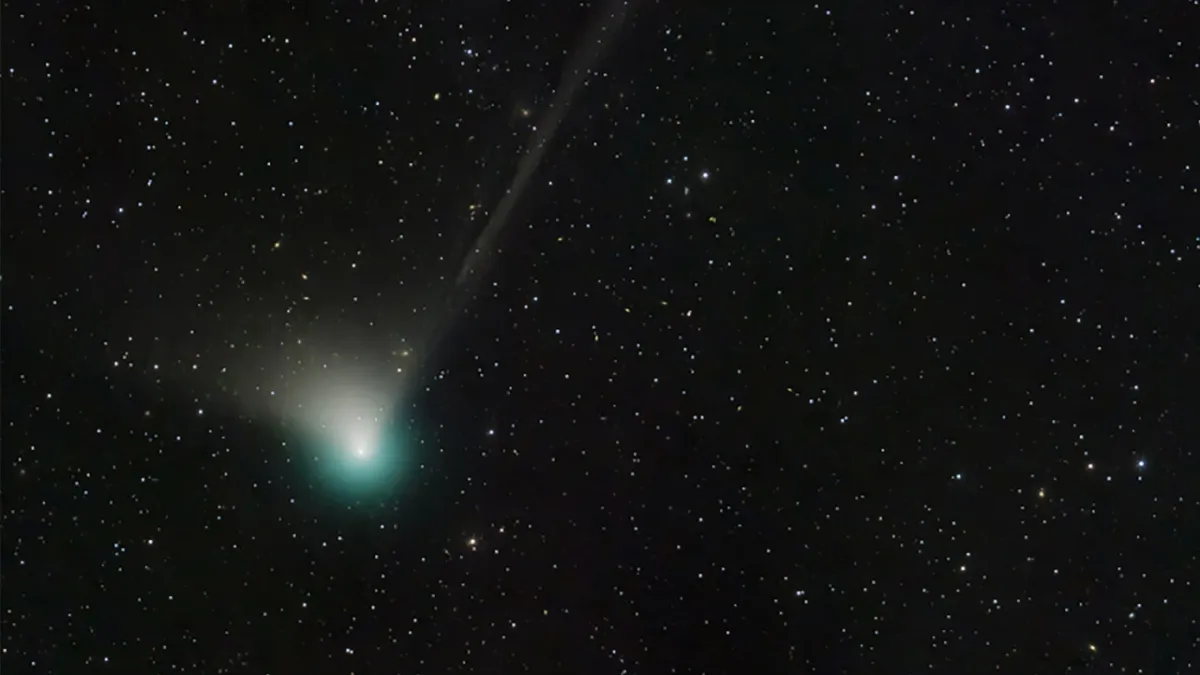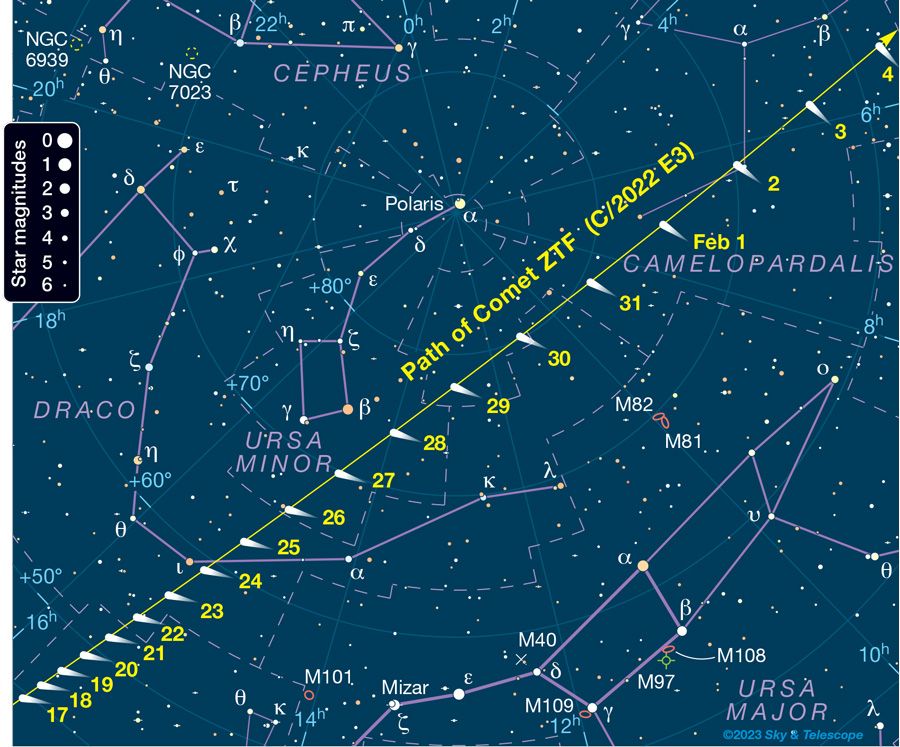Comet ZTF set to glow in the night sky

A recently discovered rare green comet will soon make an appearance in our sky for the first time since the ice age after taking an extended tour of the solar system.
The comet, discovered on March 2, 2022, by astronomers at Palomar Observatory, will be visible as it makes its closest pass of Earth between February 1 and February 2, according to NASA, and as long as our skies are clear, we should have a good chance of seeing it.
Named C/2022 E3, and also known as ZTF, the comet has a wide orbit that sent it all the way out to the farthest edge of the solar system and back, taking a whopping 50,000 years to bring it back past Earth.
By the time it's visible in the Bay Area near the end of January, ZTF will become a circumpolar object located near the star Polaris, and will be moving across the sky at about 6.5° per day. The icy green ball will make its closest pass of Earth between February 1 and February 2, putting it just about 26 million miles away; this should be the peak of its visibility in the bay area.
While astronomical objects rarely look green, this comet does appear to have a green tinge. Scientists believe the color to be caused by a reaction of diatomic carbon molecules, which provide the green hue and a rare viewing opportunity for astronomy enthusiasts.
The comet should be observable with binoculars or a small telescope, especially if ZTF continues to increase in magnitude as it approaches the sun, which most comets do. With current estimates having the comet reaching a 6.0 magnitude in brightness, the comet may be bright enough to easily spot in the night sky without the aid of optics, but depending on your location, the weather may be a factor.
The comet can be distinguished from stars by its tails constructed of dust and energized particles, as well as the fuzzy, glowing coma around it. The coma is the nebulous envelope around the nucleus of a comet, formed when the comet passes close to the sun on its highly elliptical orbit, causing its ice to turn directly to gas.






